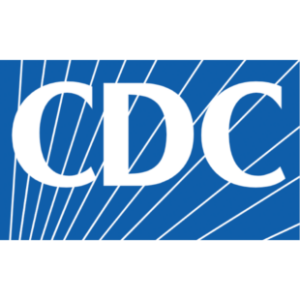QAA activities need to show results
Nurse Wilson just dreads sitting through the quarterly Quality Assessment and Assurance (QAA) meeting. He always thinks of it as voices droning on, paper shuffling, a waste of time. Nurse Crescento, on the other hand, almost looks forward to the meeting. She’s stimulated about the possibilities for improvement in the lives of her residents. Both committees are designed to meet regulatory requirements. So what’s the difference?
Quality improvement activities can help to improve the quality of care in nursing homes as well as resident, family, and staff satisfaction. And regulations do require each facility to have an active QAA Committee. But the existence of the committee alone is not enough to ensure that it makes a positive difference to care and services provided by the facility. The committee has to produce positive results—and it takes dynamic and effective processes to make it happen.
How it starts
Effective QAA starts with a process for identification and prioritization of problems and opportunities for improvement. It also in-cludes systematic steps for studying the issue through collection of information and analysis of the data. As a result of the data analysis, it may become apparent that a resident care process in the facility is not working, but this data also is unlikely to reveal the reasons for the problems. And this is the crux of the matter for many facilities in which success is elusive. A root cause analysis (RCA) must be conducted to determine the underlying reason for the problems. And the team must be alert to the possibility that more than one cause is contributing to the problem.
Speaking about quality improvement, Kiichiro Toyoda, the founder of Toyota Motor Corporation, asserted, “Every defect is a treasure if the company can uncover its cause and work to prevent it across the corporation.” It was also his view that “every problem is an opportunity.”1 This concept applies to healthcare as well as to manufacturing of automobiles. This perspective not only reflects the attitude toward improvement that is necessary for success with quality improvement activities in any organization, but it also alludes to the key to the underlying process that will lead to success—the need to uncover the root cause of the problem.
Critical step
RCA is a critical step in the improvement process. The Medicare Quality Improvement Community (https://www.qualitynet.org), the Web site of the Quality Improvement Organizations (QIOs) across the country, explains:
Root cause analysis is a class of problem-solving methods aimed at identifying the root causes of problems or events. The practice of RCA is predicated on the belief that problems are best solved by attempting to correct or eliminate root causes, as opposed to merely addressing the immediately obvious symptoms. By directing corrective measures at root causes, it is hoped that the likelihood of problem recurrence will be minimized.
Thus, one approach that can be taken to problem-solving is to look at the surface effects or symptoms and develop an action plan to eliminate those effects. Here’s an example:
The problem identified here was that the food had ants in it. The solution was to replace it with food that did not have ants in it. Predictably, the resolution of the problem was only temporary. Another approach is to look not only at the surface effects, but also to identify and resolve all possible root causes of the problem.
In the diagram above, with the root causes of the problem identified and addressed, the chances are significantly greater that the picnic will proceed without the unwelcome guests—the ants. However, to ensure that the picnic guests will not be surprised at any point with ants in their food at this picnic or future picnics, the hosts will need to periodically monitor the situation. This is the “continuous improvement” aspect of the process. Monitoring should include:
Checking periodically to make sure that food is re-covered after guests serve themselves.
Observing the area around the picnic table periodically for signs of ants and acting quickly to identify and resolve the cause if ants appear.
Identifying other factors that could lead to ants in the food (risk factors) and ensuring that processes are in place to prevent these issues from arising (i.e., ants in the food preparation area of the kitchen).
If ants appear in the picnic food despite implementation of these prevention and monitoring systems, the picnic hosts will have two places to look for the reason: Either the process implemented for preventing the problem was insufficient or broke down in at least one key aspect, or the monitoring system was not sensitive enough to detect ants before they got into the food. Reevaluation and revision will be necessary.
Whether the topic is ants at a picnic or the more complex issues that arise in healthcare, to provide lasting and continuous improvement, it is necessary to proactively identify improvement needs, drill down to the bottom line or root cause or causes of a problem, study the systems that underlie the issue, and identify and correct aspects of the systems that contribute to the problem.
Data collection should proceed for a predetermined time or for a preset number of occurrences of the issue at hand. Once all of the information has been collected, the committee must analyze it and draw conclusions about the extent of the problem. If the data reveal that a problem exists, further action will be required to identify the root causes of the problem. To identify the reasons for the problems, it can be very helpful for the team to map out the process, delineating it step-by-step on a flip chart, or adhesive notes, and then identifying where the weaknesses in the process most often occur. This method is also useful for getting team members of varying backgrounds and knowledge levels on the same page regarding the process of care that is under review. When diagramming a process, it is important to differentiate between what is established in facility policy versus what is actually occurring in the delivery of care.
For example, the indicator is residents who receive pain medication within 15 minutes of identification of the need for pain medication. Data collection shows that this goal was met only 50% of the time when residents needed pain medication.
To find out why, the committee mapped out the process.
In studying this process, the QAA team identified issues that significantly impacted the timeliness of the delivery of the pain medication to the resident.
Once the committee understood where the process was breaking down, it was able to work with the nursing department to try to resolve the problems. Taking action based on the findings of the study of the problem is the key to success. The action taken must be correlated with the findings in order for the improvement process to be effective. As Ransom et al2 noted, “Data collection should not become the ultimate goal of the team. Action to make things better for those we serve is the ultimate goal.”
To send your comments to the author and editors, please e-mail shephard1008@iadvanceseniorcare.com.
References
- Smith ML, Erwin JA.Final solution via root cause analysis (with a template). Available at https://www.isixsigma.com/library/content/c050516a.asp#authors.
- Ransom SB, Maulik SJ, Nash DB (Eds.) The Healthcare Quality Book: Vision, Strategy, and Tools. Chicago: Health Administration Press 2005. Washington D.C.:AUPHA Press.
Related Articles
Topics: Articles , Facility management , Leadership











